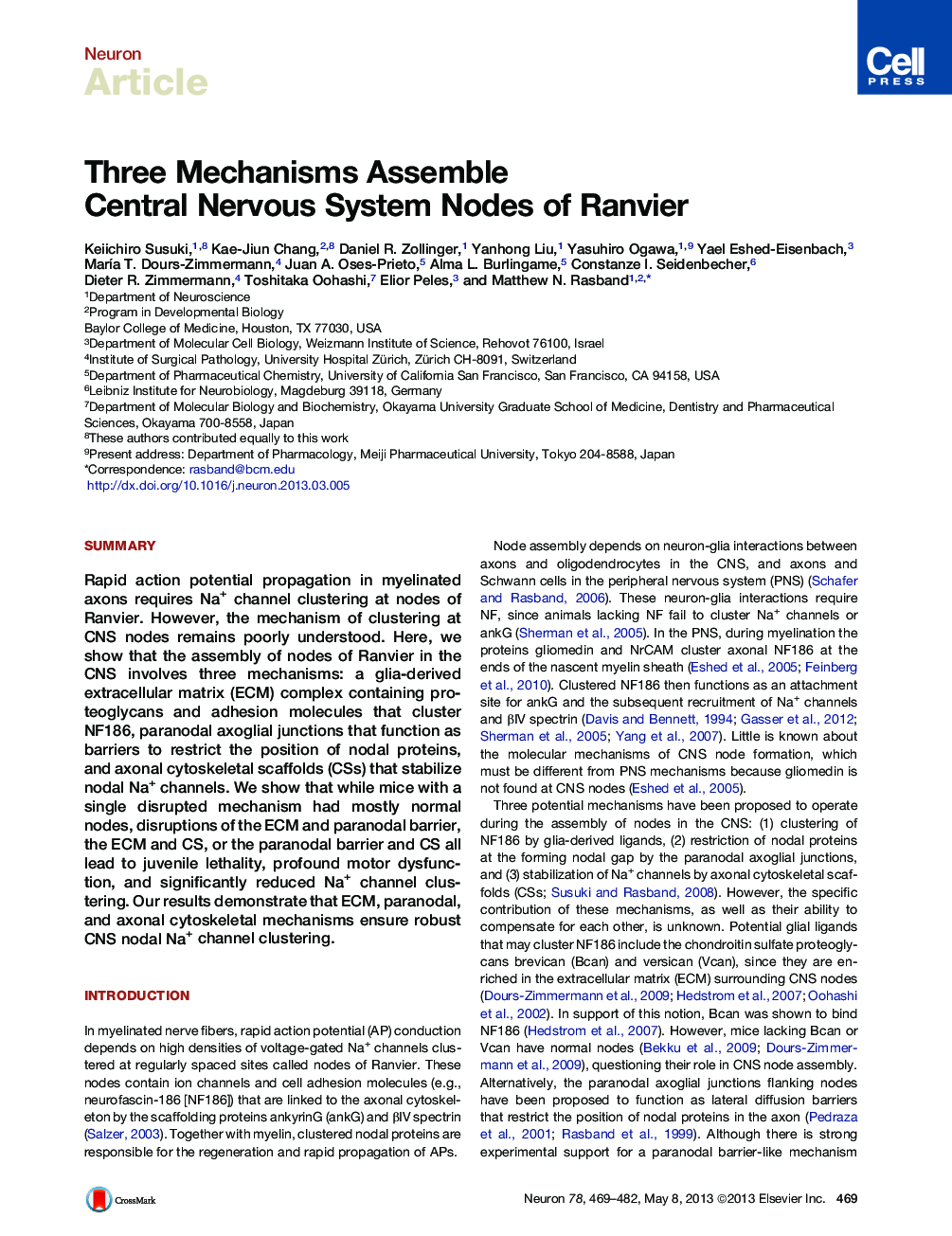| Article ID | Journal | Published Year | Pages | File Type |
|---|---|---|---|---|
| 4321320 | Neuron | 2013 | 14 Pages |
•A complex extracellular matrix (ECM) surrounds CNS nodes and binds to NF186•Mutant mice lacking two mechanisms have impaired Na+ channel clustering•ECM, paranodal, and cytoskeletal mechanisms assemble CNS nodes
SummaryRapid action potential propagation in myelinated axons requires Na+ channel clustering at nodes of Ranvier. However, the mechanism of clustering at CNS nodes remains poorly understood. Here, we show that the assembly of nodes of Ranvier in the CNS involves three mechanisms: a glia-derived extracellular matrix (ECM) complex containing proteoglycans and adhesion molecules that cluster NF186, paranodal axoglial junctions that function as barriers to restrict the position of nodal proteins, and axonal cytoskeletal scaffolds (CSs) that stabilize nodal Na+ channels. We show that while mice with a single disrupted mechanism had mostly normal nodes, disruptions of the ECM and paranodal barrier, the ECM and CS, or the paranodal barrier and CS all lead to juvenile lethality, profound motor dysfunction, and significantly reduced Na+ channel clustering. Our results demonstrate that ECM, paranodal, and axonal cytoskeletal mechanisms ensure robust CNS nodal Na+ channel clustering.
